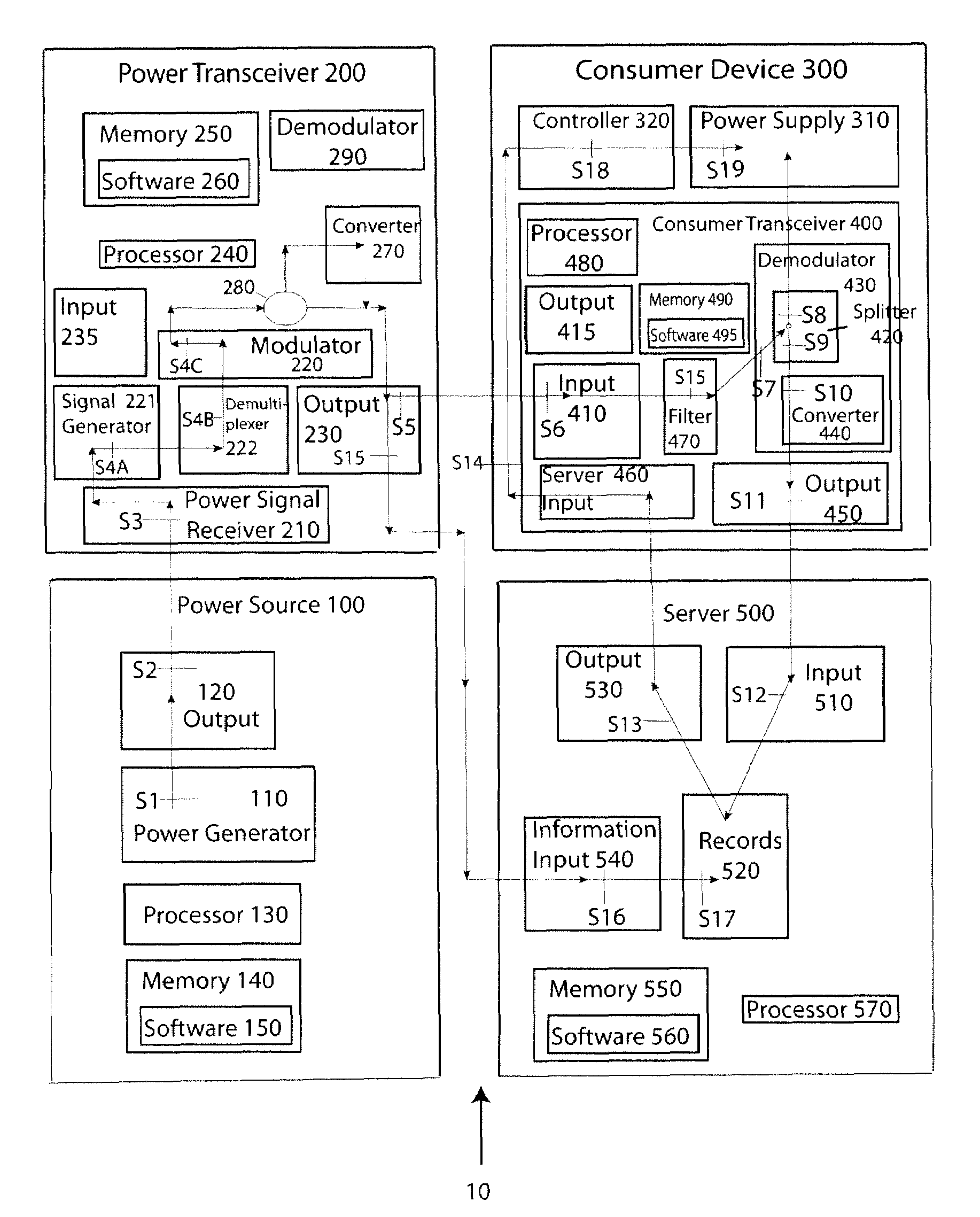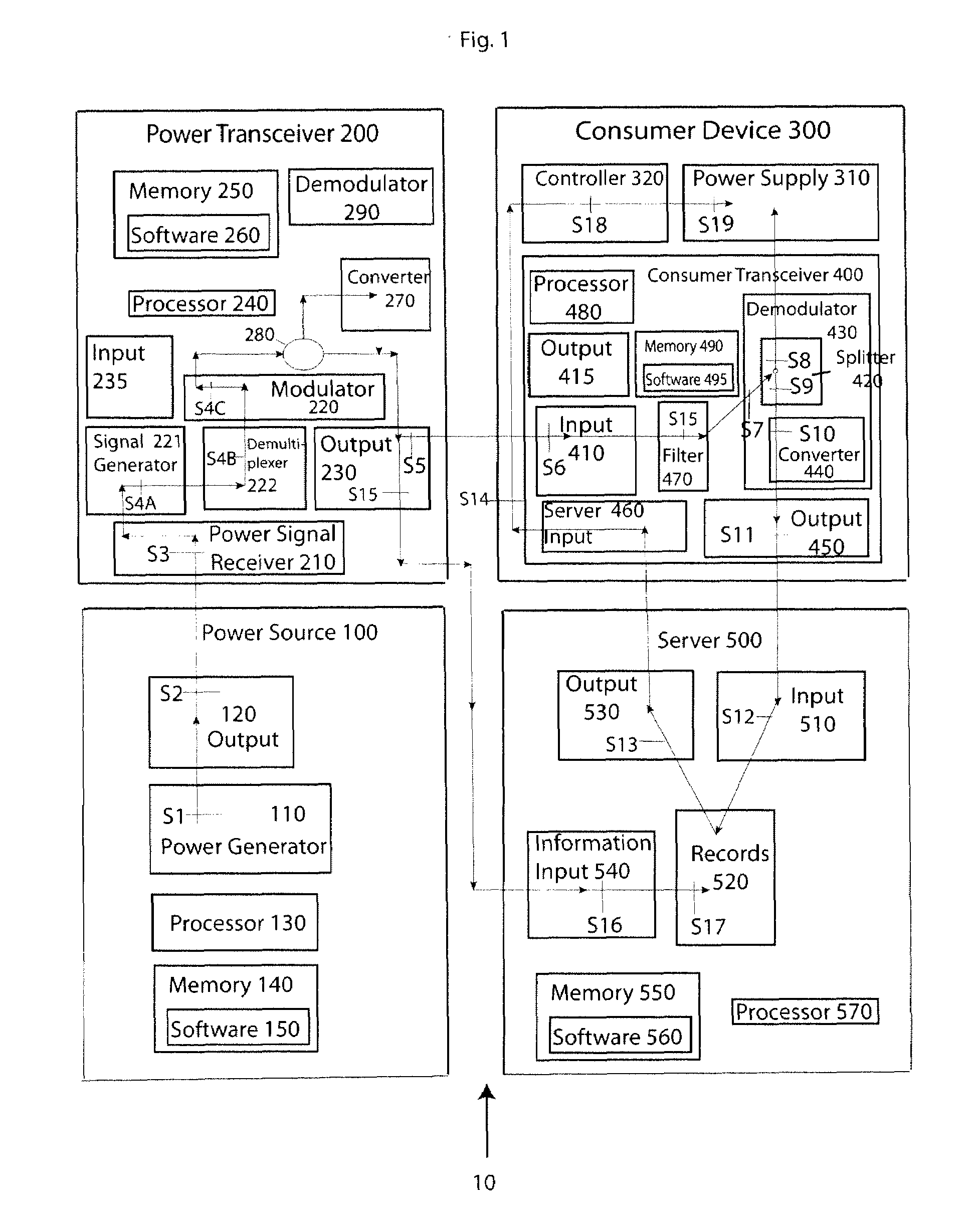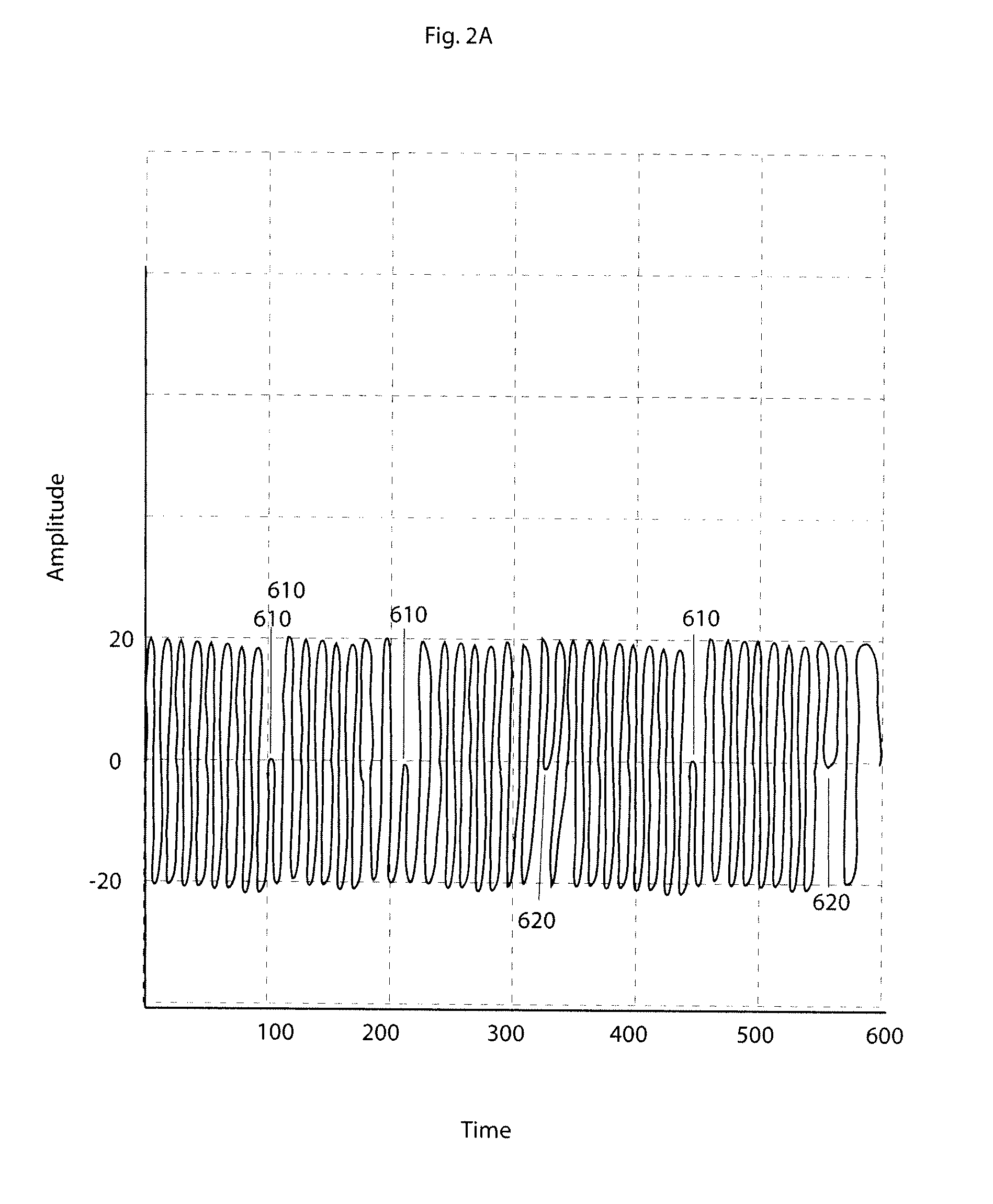Intelligent power system and methods for its application
a power system and intelligent technology, applied in the direction of electric energy management, modulated carrier systems, driver interactions, etc., can solve the problem that the general knowledge of the device which consumes energy is not generally known, and achieves the effect of reducing power level and improving carrier error rate in power channels
- Summary
- Abstract
- Description
- Claims
- Application Information
AI Technical Summary
Benefits of technology
Problems solved by technology
Method used
Image
Examples
Embodiment Construction
[0022]Aspects of the present invention provide a system 10 for intelligent power distribution. FIG. 1 illustrates a schematic view of an embodiment of the present invention comprising four components: a power source 100, a power transceiver 200, a consumer device 300, and a server 500. Various embodiments of the present invention may comprise a plurality of any of these components, and embodiments may be built without one more or of these components.
[0023]Power source 100 may be a large power generation facility such as the Hoover Dam, a local power facility such LILCO, PECO, or ConEdison, or a power generator such as the power generators made by Honeywell, Briggs and Stratton, or Generac. The power source 100 may also comprise a power generator 110 for generating a power signal 710 (FIG. 2C). The power signal may be transmitted to the power transceiver 200 via output 120, The power generator 100 may comprise the power transceiver 200 or they may be separate components as shown. The...
PUM
 Login to View More
Login to View More Abstract
Description
Claims
Application Information
 Login to View More
Login to View More - R&D
- Intellectual Property
- Life Sciences
- Materials
- Tech Scout
- Unparalleled Data Quality
- Higher Quality Content
- 60% Fewer Hallucinations
Browse by: Latest US Patents, China's latest patents, Technical Efficacy Thesaurus, Application Domain, Technology Topic, Popular Technical Reports.
© 2025 PatSnap. All rights reserved.Legal|Privacy policy|Modern Slavery Act Transparency Statement|Sitemap|About US| Contact US: help@patsnap.com



